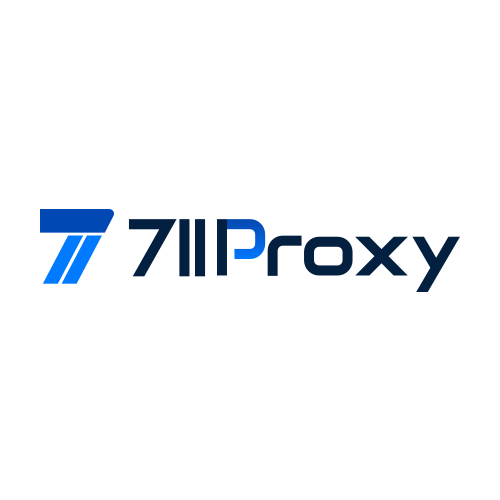How to make good use of proxy IPs to get high quality data?
 June 20.2025
June 20.2025

<p style="line-height: 2em;"><span style="text-wrap-mode: nowrap;">Effective acquisition of network data has now become a key capability for enterprise decision-making and market competition. Proxy IP technology as an important tool for data acquisition, its correct use is directly related to the efficiency and quality of data acquisition. Mastering the scientific use of proxy IP can make data acquisition work twice as effective with half the effort.</span></p><p style="line-height: 2em;"><span style="text-wrap-mode: nowrap;"><br/></span></p><p style="line-height: 2em;"><span style="text-wrap-mode: nowrap;">Preparation is the foundation of successful acquisition. Before starting, it is necessary to clarify the goal and scope of data acquisition, including key parameters such as the target website, the type of data required and the frequency of acquisition. Choosing the right type of proxy IP for these needs is critical. Residential IPs are suitable for scenarios that require a high degree of anonymity, data center IPs are more suitable for large-scale and rapid collection, and mobile IPs can better simulate mobile user behavior. At the same time, it is both a technical consideration and a business ethic to reasonably plan the pace of collection to avoid overloading the target website.</span></p><p style="line-height: 2em;"><span style="text-wrap-mode: nowrap;"><br/></span></p><p style="line-height: 2em;"><span style="text-wrap-mode: nowrap;">Building a stable proxy IP resource pool is the core link. Quality proxy IP services should have sufficient number of IPs, wide geographic distribution and reliable connection stability. It is recommended to adopt a rotation mechanism so that different IPs work alternately according to certain rules, which can extend the service life of individual IPs and improve the collection success rate. The intelligent scheduling system can adjust the IP usage strategy in real time according to the response of the target website, and automatically switch the alternate IPs when encountering access restrictions to ensure that the collection process is not interrupted.</span></p><p style="line-height: 2em;"><span style="text-wrap-mode: nowrap;"><br/></span></p><p style="line-height: 2em;"><span style="text-wrap-mode: nowrap;">In the actual acquisition process, simulating human behavior patterns is the key to avoiding recognition. This includes setting reasonable request intervals, using diverse user proxy header information, and simulating natural clicking and browsing paths. It is worth noting that the collection strategy should also be differentiated at different times, for example, the collection frequency can be appropriately increased during the low period of target website visits, while restraint should be maintained during the peak period.</span></p><p style="line-height: 2em;"><span style="text-wrap-mode: nowrap;"><br/></span></p><p style="line-height: 2em;"><span style="text-wrap-mode: nowrap;">Data quality control should not be neglected. Data anomalies can be discovered in time by cross-validating the collection results with multiple IP nodes. Establish a perfect data cleaning process to eliminate data entries that are duplicated, mutilated or obviously wrong to ensure the accuracy of subsequent analysis. At the same time, complete records of the collection process are kept, including information such as timestamps, IP addresses used, response status, etc. This metadata is very helpful for analyzing the collection results and optimizing the strategy.</span></p><p style="line-height: 2em;"><span style="text-wrap-mode: nowrap;"><br/></span></p><p style="line-height: 2em;"><span style="text-wrap-mode: nowrap;">In the face of various challenges that may arise during the collection process, a systematic response plan is required. When encountering CAPTCHA interception, the collection frequency can be reduced or the IP segment can be changed; when certain IPs are blocked, they should be moved out of the available resource pool in time and the reasons should be analyzed; when the structure of the target website changes, the collection rules should be adjusted accordingly. The effectiveness of these countermeasures depends largely on the daily maintenance and monitoring of the proxy IP network.</span></p><p style="line-height: 2em;"><span style="text-wrap-mode: nowrap;"><br/></span></p><p style="line-height: 2em;"><span style="text-wrap-mode: nowrap;">With the advancement of technology, modern proxy IP data collection is developing in the direction of intelligence. Machine learning algorithms can automatically optimize collection strategies, predict the best time to collect, and identify changes in website anti-climbing mechanisms. These intelligent features significantly improve collection efficiency while reducing the need for human intervention. However, no matter how intelligent, manual supervision and strategy adjustment are still indispensable.</span></p><p style="line-height: 2em;"><span style="text-wrap-mode: nowrap;"><br/></span></p><p style="line-height: 2em;"><span style="text-wrap-mode: nowrap;">In terms of compliance, proxy IP data collection must comply with relevant laws and regulations and the terms of use of the target website. Reasonably set the collection frequency to avoid substantial impact on the target website; only collect publicly available data and do not try to break through permission restrictions; properly store and use the collected data and respect the legitimate rights and interests of the data subjects. These compliance requirements are not only legal obligations, but also a reflection of corporate social responsibility.</span></p><p style="line-height: 2em;"><span style="text-wrap-mode: nowrap;"><br/></span></p><p style="line-height: 2em;"><span style="text-wrap-mode: nowrap;">A successful proxy IP data collection project cannot be separated from continuous optimization and improvement. Regularly evaluate the collection efficiency and quality indicators, analyze failure cases and bottleneck links, and adjust the proxy IP usage strategy based on actual results. This closed-loop management of continuous improvement ensures that the data collection system evolves as the environment and requirements change.</span></p><p style="line-height: 2em;"><span style="text-wrap-mode: nowrap;"><br/></span></p><p style="line-height: 2em;"><a href="https://www.ippeak.com/use-case/web" target="_self"><span style="text-wrap-mode: nowrap;">IPPeak</span></a><span style="text-wrap-mode: nowrap;"> opens up new possibilities for data collection, but the real value lies in how this data is transformed into business insight. Moving from technology implementation to value realization requires close collaboration between data collectors, analysts and decision makers. In this era where data is an asset, mastering the scientific use of proxy IP is mastering the golden key to acquiring data wealth.</span></p>
You might also enjoy









